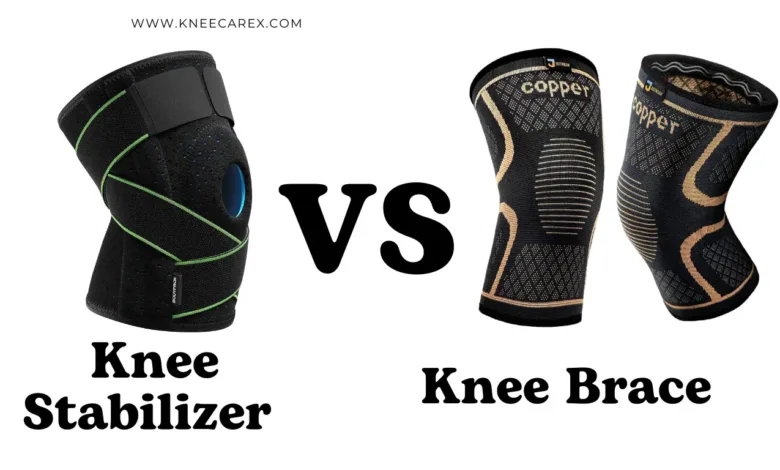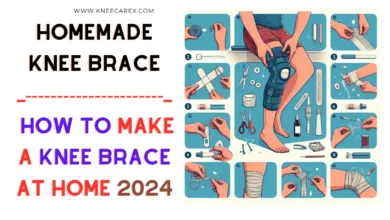Find the Perfect Support: Knee Stabilizer vs Knee Brace

Do you want to know which knee support device is best for your needs? The ongoing debate between knee stabilizer vs knee brace has left many people scratching their heads in confusion. Well, fear not because we’re about to dive deep into the world of knee support and uncover the differences, benefits, and drawbacks of these two popular options. Whether you’re an athlete looking to protect your knees during intense workouts or a weekend warrior seeking relief from nagging joint pain, understanding the nuances between knee stabilizers and knee braces is crucial for making an informed decision.
Contents
Understanding Knee Support

It’s important for anyone seeking knee support to comprehend their unique requirements and select the appropriate type of support accordingly. By recognizing the nuances between knee stabilizers and knee braces, individuals can make informed decisions that cater to their unique requirements. Whether it’s enhancing athletic performance or facilitating rehabilitation, selecting the appropriate form of knee support can significantly impact overall comfort and functionality. This understanding empowers individuals to proactively address their knee-related concerns while taking proactive steps towards improved mobility and well-being.
Tennis knee injury: Causes And Treatment For Knee Injuries From Tennis
Understanding Basketball Knee Injuries: Prevention, Treatment, and Recovery
Types of knee support:
When it comes to knee support, there are various types available to cater to different needs. Knee sleeves, for example, are designed to provide compression and mild support for minor knee pain or discomfort during physical activities. They are lightweight and flexible, making them a popular choice among athletes. On the other hand, knee braces offer a higher level of support and are commonly used by individuals recovering from injuries or dealing with chronic conditions like arthritis. These braces come in different designs, such as hinged or wraparound styles, each offering varying degrees of stability and protection.
Another type of knee support is the patellar stabilizing brace, which specifically targets the kneecap area to provide additional stabilization for conditions like patellar tendonitis or runner’s knee. This type of brace typically features a reinforced pad around the patella to alleviate pressure and improve alignment during movement. Understanding the specific benefits and functions of each type of knee support can help individuals make knowledgeable choices regarding the option that best meets their needs. For injury prevention or recovery.
Detailed Evaluation: Knee Stabilizer
The knee stabilizer, a crucial tool in the rehabilitation and support of knee injuries, offers unique benefits that set it apart from traditional knee braces. With its focus on providing stability to the joint through adjustable straps and hinges, the knee stabilizer offers targeted support that allows for greater mobility and flexibility during recovery. Additionally, its ability to limit excessive movements while keeping the natural range of motion intact makes it an ideal choice for individuals seeking protection without sacrificing full function.
An in-depth evaluation reveals that the knee stabilizer not only provides physical benefits but also instils confidence in users by offering a sense of security during activities. The precise fit and customizable features cater to diverse needs, ensuring optimal comfort and performance. Moreover, the effectiveness of a knee stabilizer in preventing further injury by promoting proper alignment highlights its significance as a valuable aid in both recovery and injury prevention protocols. Understanding these nuanced aspects can assist individuals in making informed decisions regarding their specific needs when comparing knee stabilizers versus traditional braces.
Detailed Evaluation: Knee Brace

Another important aspect to consider is the adjustability of the knee brace. Different individuals may require varying levels of compression and support, depending on their specific injury or condition. Therefore, a knee brace with adjustable straps or fastenings can provide a more customized fit, catering to the unique needs of each user. Furthermore, evaluating how well the knee brace accommodates different levels of physical activity is essential; it should allow for movement and flexibility while still providing adequate support during various activities such as walking, running, or sports.
Comparative Analysis: Stabilizer vs. Brace
Many people may use the terms stabilizer and brace interchangeably, but these two knee support devices serve different purposes. A stabilizer is designed to limit movement and provide stability to a joint, making it ideal for athletes recovering from an injury or looking to prevent one. On the other hand, a knee brace is intended to offer support and protection while allowing for a wider range of motion, making it suitable for individuals with chronic conditions like arthritis.
Ultimately, selecting between a stabilizer and a brace hinges on understanding the unique functions of each device and tailoring their usage to address individual needs effectively. By recognizing the distinct roles of these supportive tools, users can make informed decisions based on their specific requirements instead of adopting a one-size-fits-all approach when it comes to knee support.
Choosing the Right Option for You
When it comes to choosing between a knee stabilizer and a knee brace, the decision can be influenced by various factors. Both options offer unique benefits and cater to different needs, so it’s crucial to assess your specific situation before making a choice. For instance, if you’re recovering from a mild injury and require moderate support during physical activities, a knee stabilizer may be the ideal option for you. On the other hand, if you have chronic knee pain or instability that requires rigid support and compression, a knee brace could be more beneficial in providing the necessary reinforcement.
It’s important to consider your lifestyle and activity level when determining which option is right for you. If you lead an active lifestyle involving sports or intense physical activities, opting for a knee brace with reinforced support might offer more stability during movements. Conversely, individuals who engage in light exercises or everyday activities may find that a knee stabilizer provides adequate support without hindering their mobility. By carefully assessing your individual needs and considering how each option aligns with your lifestyle, you can make an informed decision on whether a knee stabilizer or knee brace is the right choice for you.
FAQ’s
Do I need a knee brace or a knee stabilizer?
It’s critical to comprehend your unique needs and support requirements while selecting a knee brace or stabilizer. A knee stabilizer offers additional support and stability, particularly following surgery or injury, whereas a brace offers compression and stability. Making an educated choice might be aided by taking your condition’s severity and functionality into account.
What is the difference between a knee sleeve and a stabilizer?
For knee protection, it’s essential to know the difference between a stabilizer and a knee sleeve. A knee sleeve is perfect for small injuries sustained during physical activity since it offers compression and light support. In contrast, a knee stabilizer, which is appropriate for serious injuries or long-term knee instability, provides enhanced support with stays made of metal or plastic. Selecting the best one depends on your requirements and objectives.
Do knee braces stabilize the knee?

What makes a knee brace different from a knee immobilizer?
Finding the ideal support for a knee injury or stability issue requires knowing the difference between a knee brace and a knee immobilizer. When used following surgery or serious injuries, a knee immobilizer inhibits movement, but a knee brace offers stability and regulated movement. Both play crucial roles in aiding in the healing process and averting further harm.
What are the disadvantages of a knee brace?
When it comes to knee injuries or chronic problems, knee braces offer stability and support, but they can also be uncomfortable and limit the range of motion. Regular use may cause the muscles surrounding the knee joint to weaken, which could reduce the strength of the joint. The efficacy of the brace as a supportive device might be further complicated by skin irritation and pain resulting from improper fitting or extended usage.
Conclusion: Knee Stabilizer vs Knee Brace
In conclusion, when it comes to making the best choice for your knees, it’s essential to consider your specific needs and the level of support required. While knee stabilizers are great for providing mild to moderate support during physical activities, knee braces offer more comprehensive protection and stability for those dealing with injuries or chronic conditions. It’s important to consult with a healthcare professional or a physiotherapist to determine which option is best suited for your situation.



